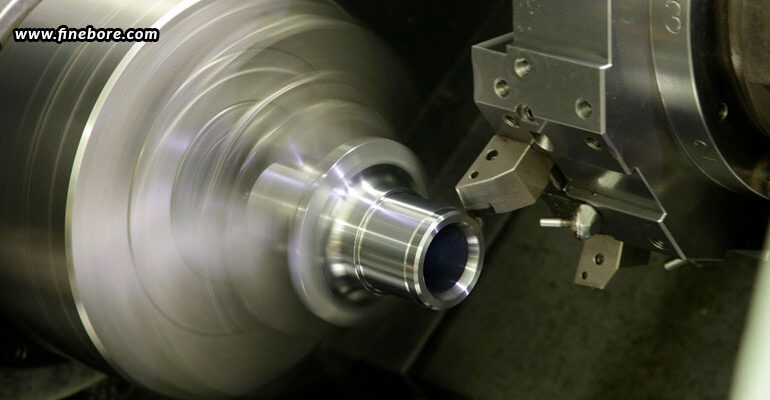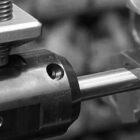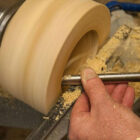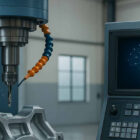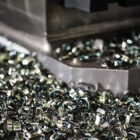In the realm of precision machining, the boring tool frequently goes unrecognized, yet it plays a crucial role in shaping metal with micron-level precision across vital industries like aerospace, automotive, medical devices, and energy. However, many machinists and engineers may not be familiar with the complete lifecycle of a boring tool, which spans from its creation in a manufacturing plant to its eventual restoration after enduring thousands of cycles. This blog adopts a narrative style to trace the path of a high-performance boring tool. Through this perspective, we delve into its engineering origins, usage trends, indicators of wear, and the reconditioning methods that not only revitalize the tool but also provide significant long-term value.
Tool design and manufacturing
The lifecycle of a tool commences well before it engages with any metal. The design of a boring tool is initiated based on the specific requirements of its intended application, whether it involves fine boring for aerospace valve seats or robust boring for automotive engine blocks. The first step in this process is selecting the appropriate materials, which is vital for the tool’s longevity and effectiveness. Common materials include high-speed steel, carbide, and polycrystalline diamond. Carbide is particularly preferred for its exceptional hardness and resistance to heat in high-speed scenarios, while PCD is ideal for working with non-ferrous or abrasive substances.
Equally important are the design considerations. Tool designers pay close attention to factors such as shank geometry to reduce vibration, the design of insert pockets for secure clamping, internal coolant channels for enhanced heat dissipation, and features that allow for micrometre-level adjustments in fine boring tools. After finalizing the design, the focus shifts to precision manufacturing, which includes CNC grinding, heat treatment, and laser marking. Rigorous quality control processes, such as 3D scanning and checks using coordinate measuring machines, ensure that the tools adhere to extremely tight tolerances, often less than 5 microns. Once this stage is complete, the tool is packaged and dispatched, prepared to embark on its operational journey in the workshop.
First deployment
When the boring tool arrives in the machining environment, it encounters various real-world factors such as the hardness of the material, cutting speed, feed rate, coolant conditions, and the overall health of the machine. Properly setting up the tool is crucial for achieving the best possible outcomes. Ensuring correct alignment, secure clamping, and conducting runout checks are vital steps, as even the finest tool can fail to perform effectively if it is not properly mounted in the holder or spindle.
As the tool is put to use, its performance is carefully observed. During its initial operations, it must meet essential criteria such as dimensional accuracy, surface finish quality, and efficient cycle times. In high-volume production settings, boring tools are often operated for long durations, and more sophisticated facilities utilize CNC-integrated monitoring systems or smart tool holders with built-in sensors. These advanced tools gather real-time data on aspects like tool deflection, vibration, and wear, allowing for proactive management and timely adjustments.
Signs of wear and deterioration
Like all tools, boring tools experience wear and degradation over time. Recognizing the signs of wear is crucial to prevent quality issues and minimize downtime. One of the earliest indicators is a noticeable decline in surface finish; a once smooth, reflective surface may appear dull or scratched. Another significant sign is tolerance drift, where the bores start to stray from the specified dimensions, often due to edge wear or thermal expansion.
Increased vibration or chatter is another warning sign that the tool’s cutting edge may be dulling. In more severe cases, inserts can chip or crack, particularly during interrupted cuts or high-speed operations. When these problems occur, manufacturers face an important decision: should they replace the tool or consider reconditioning it? The latter option, if feasible, can provide substantial advantages.
Reconditioning
Reconditioning is an essential yet frequently overlooked aspect of a boring tool’s lifecycle. When done correctly, it can significantly prolong the tool’s lifespan by two to five times and reduce costs by as much as 40% compared to buying new tools. The reconditioning process starts with a comprehensive inspection and evaluation. Tools are checked for cracks, chips, and wear to assess their suitability for regrinding or whether they need complete re-tipping.
Following the assessment, tools undergo regrinding or edge renewal using diamond or CBN grinding wheels to restore their original geometry, including relief angles, rake, and cutting edges. This is then complemented by the application of new wear-resistant coatings such as TiN, TiAlN, or DLC to improve thermal resistance and overall durability. The reconditioned tool is subsequently balanced and tested to ensure it meets performance specifications without compromising quality or reliability. The benefits of reconditioning extend beyond cost efficiency; it also supports sustainability by minimizing waste and energy consumption while enabling manufacturers to maintain consistent tool profiles and programming data.
Maintenance best practices
To maximize the lifespan and performance of a boring tool, it is crucial to implement daily practices on the shop floor in addition to reconditioning. Conducting routine inspections before and after each shift can help detect early signs of edge wear, coating deterioration, and insert instability. Utilizing clean, filtered coolant is vital, as it mitigates thermal shock and contributes to a longer tool life.
Adjusting cutting parameters according to the tool’s material and application can also have a substantial impact. Operating tools at excessively high speeds or feeds can accelerate wear and heighten the risk of tool failure. Adhering to manufacturer-recommended guidelines is essential. Additionally, the quality and condition of the tool holder play a critical role. Even the finest boring bar may underperform if mounted in a worn or incompatible holder. Anti-vibration holders are particularly effective for deep boring tasks.
Enhancing efficiency can be achieved through the implementation of tool tracking systems. These systems record usage hours, track wear rates, and document regrind cycles, enabling operators to make informed choices and optimize the return on investment for tooling.
End of life
Ultimately, every tool will reach the end of its useful life, whether due to significant wear, multiple regrinds that change its original shape, or material fatigue. At this stage, scrapping and recycling are the logical next steps. Most carbide and steel tools are recyclable, and many suppliers provide rebate programs based on the weight of the tools returned.
Occasionally, retired tools can spark innovation. High-performing geometries or insert designs can be reverse-engineered and modified for new tooling with enhanced features. This creates a feedback loop that informs future tool development and boosts overall shop performance. Thus, even in retirement, a boring tool can play a role in the continuous improvement cycle that characterizes modern precision machining.
Closing thoughts
The lifecycle of a boring tool encompasses more than just wear and tear; it is a narrative of innovation, resilience, and precision. From the initial design and material choice to its first use, signs of wear, and eventual reconditioning or retirement, each phase offers opportunities to enhance efficiency, accuracy, and cost-effectiveness. So, the next time you handle a boring tool or attach one to a machine, consider the journey it has undergone. Behind every precision bore is a tool that has been meticulously engineered, tested against real-world challenges, and, if properly maintained, capable of providing value well beyond its initial use. For those seeking high-quality, precision-engineered boring tools, FineTech Toolings stands out as one of the most reliable boring tools suppliers in Bangalore, offering durable solutions that meet the evolving needs of modern machining.

